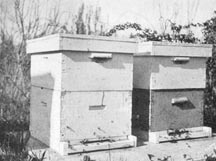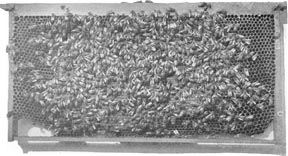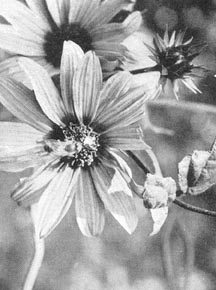THE MAGIC CITY
page 93
The Naturalist had a visitor, a winsome lassie from the city. She was fascinated with all the wonderful world which he showed her, and together they had wandered through the little wood and over the meadows near by. Together they had visited the oriole’s nest and listened to the merry song of the brown thrasher who had her nest in the lilac bushes. Hand in hand they had walked through the wild garden, while the Naturalist pointed out the trilliums which he had gathered near the shores of Lake Michigan, the wild currant from Minnesota, the prickly pear from the badlands of Dakota, and the many other plants which he had found on his journeys to the outside world and transplanted safely to Tamakoche.When at last they had tired of visiting with the wild creatures and returned to the easy chair in the study, she begged for a story--a really truly true story.
“Tell me about the most interesting place in the whole wide world, “ she said.
The Naturalist protested that he had seen very little of the big outside world, and that he really did not know what was the most interesting place.
“Then tell me about the most interesting place that you ever saw,” she begged.
“I will tell you about the most interesting place that I know of, “ he agreed, ‘and I will take you to see it for yourself, and you can then tell me whether it is so.”
So it came about that the Naturalist told the girl about the Magic City, and together they went to see the inhabitants and the wonderful way in which they lived.
It was June when the little girl visited the Naturalist, and the wood and the fields were as green as green. The birds were singing gaily in the trees above the study, and crickets and frogs sang their evening chorus after the birds had finished their daily concert. Finding it too much like the city in the study, the little girl took the Naturalist by the hand and led him outside under the big walnut and sat down on the grass. “It is nicer out here, and, besides, the story will seem more real while I lie and look up at the birds among the branches overhead,” she said. This is the story that he told the little girl under the big tree.
“For centuries the wise men of the earth have known of the magic city. In every generation men have visited it and endeavored to learn all the secrets of the little people that live there. Little by little they have learned some of the secrets, and there are still many that they guard very carefully and which man has never yet found out. These little people are wonderful chemists, for they gather a commonplace product from the fields and so change its character that it will keep for many years without spoiling. They are wonderful builders, and utilize a product which they make for themselves and which man has never learned to imitate, in their building. The have developed the most wonderful system of government, for every individual living in that city has an equal opportunity, and enjoys equal privileges and an equal share of the wealth of the community. They are very patriotic, and any member of the community will lay down her life, if necessary, without hesitation to drive away invaders who would rob them of their treasure.
“All the babies are reared in cradles exactly alike, and the same nurses care for one after another, giving them the same attention, except when they wish to rear a new queen to replace the one who is failing from old age, or to found a new city. When it comes time to divide the population and to found a new city, the old queen and the older inhabitants go forth to begin life anew, leaving the old established home for the young. But, my dear, you must remember that it is hardly safe to speak of other creatures as though they had similar thoughts and ways to men, for we know not by what senses they find their way, or conduct their affairs. It is better for me to show you the city itself and to explain everything that we see, than to tell you about it in a way that will give a wrong impression. The Magic City is the hive, and the inhabitants are the bees. Although they formerly made their homes in hollow trees and in cavities in the rocks, man has learned to turn their labor to his own advantage, and provides them with hives in which to live.”
The Naturalist then provided his visitor with a veil and some gloves, to guard her against possible attack by the sentinels on guard at the gates of the city, and together they went to see whether they could learn some new secret of the bee people.
When they reached the apiary he called her attention to the fact that there was not one magic city but many of them, and in each lived many thousands of busy inhabitants. The Naturalist carried a smoker, an implement used by every up-to-date beekeeper. In it he set fire to some excelsior shavings and some burlap, and by pressing the bellows, sent forth a dense smoke. On approaching the hive they stopped for a time to see how busily the bees were engaged in carrying in their loads of pollen in bright yellow balls. Others going in carried nothing that the visitors could see, but which, in fact, had their honey sacs full of nectar. The Naturalist explained that the pollen was to serve as bread for the baby bees, and that they lived all the time on bread and honey. He explained also that the nectar which they carried was gathered from the flowers, and that it seemed to be nothing much more than a little sweetened water when they found it, but that after it was brought to the hives they made wonderful changes by which it was converted into honey.
The cover was then lifted off the hive and a puff of smoke blown across the top of the exposed frames. The little girl gave an exclamation of surprise at this, and it was explained to her that the object of the smoke was to disarm the guards and save themselves from annoyance by resentful bees. He explained how carefully the bees guard their treasure, and that if they were not constantly on the watch, all the product of their hard labor would be lost. Even other bees will rob their weaker neighbors. The labor of the hive is so divided that some bees remain on guard at every opening, to make sure that each incoming bee belongs there and is bringing in something to add to the wealth of the community, instead of a stranger intent on seeking spoils. When the smoke was blown across the hive it disturbed them greatly. There was a great rush for the open cells, and every bee began to take as big a load of honey as she could carry. Apparently, they thought that the city was in danger, and they seemed intent on saving as much as possible of their hard-earned hoard. The Naturalist then explained that beekeepers disturbed their bees as little as possible to avoid interrupting their work of storing up honey. By keeping gentle strains of Italian bees which have become used to being handled, they are able to carry on the necessary work with very little disturbance.
The Naturalist then lifted out a frame which was filled with comb and covered with bees. He called his visitor’s attention to the way in which the cells were built, with the bottom of each one opposite one third of each of three others on the opposite side of the comb. Some of the cells along the top of the comb were filled with honey, while others contained eggs and newly hatched bees. The eggs were carefully pointed out, and then the little larvae which appear after three days when the egg hatches. The fat, wormlike little creature has no resemblance to the mature bee, but grows very fast for six days, during which it is frequently fed by the nurses. When the larva has been fed for six days, it then straightens out lengthwise in the cell and it is sealed over. It then lives very quietly, taking no food, but there in the dark cell where no eyes can see, a wonderful change is taking place, so that at the end of twelve days the cap is removed from the cell and the mature bee comes forth.
Soon after her emergence the young bee begins to share the duties of the hive, nursing the babies, cleaning out the waste, and various other duties. Several days pass before she goes to the field to join the busy throng which are intent in laying up just as big a store of honey as possible. No matter how much honey there may be already there, if there is honey in the field and room in the hive, they will continue to pile it up against the day of scarcity.
On one comb they found a number of sealed cells that were larger than the others, and whose tops were arched high like rifle bullets. These were occupied by drones, or male bees. When mature they are big, blundering fellows who never work and who even insist on being fed by their industrious sisters. In their larval state they must be fed for a somewhat longer period, and they occupy their cells longer. Instead of reaching maturity in three weeks, like their sisters, they require twenty-five days from the time the egg is laid. While the drone lives a carefree life during the warm summer days when his busy sisters are laying up their winter store, they are not dealt with lightly when the chill days of autumn come, and the workers are no longer busy bringing honey from the field. When at last the time comes when they take delight in remaining inside and enjoying the warmth of the hive, they are driven out heartlessly by the sisters who have cared for them so indulgently during the warm days of summer. Poor fellows! they have toiled not in the harvest, and they are now driven out to perish of cold and hunger.
Most interesting of all they found the queen, the mother of the whole population of the bee city. When they removed the comb on which she was laying, she paid little attention, but kept on looking into the cells to find those which were empty and then turning and backing in to leave an egg in each. Thus she spends her days, moving from cell to cell and laying a thousand or more eggs every day during the height of the honey-gathering season.
At the time of the little girl’s visit the colony was preparing to swarm, and, accordingly, there were some special cells in which queens are reared. When the bees would rear another queen, they provide a very large cell, which looks much like a small peanut, and feed the baby larva freely with a very rich food, call royal jelly. With the big cell and the rich food the royal baby grows very rapidly, and reaches maturity much sooner than either the worker bees or the drones. Only sixteen days from the time the egg is laid are necessary for her complete development.
While they were standing there beside the open hive, they heard a zeep, zeep, and a smothered answer, which was the piping of the queens. One sound was made by the mature queen on the combs, and the other by the young one which was just ready to emerge from the cell, but which was prevented from doing so by the workers until the swarm was ready to leave the hive. The girl learned that when this sound is heard the beekeeper knows that the bees are ready to swarm and will come out before very long.
A few hours later they chanced to be in the apiary when the swarm issued. Suddenly there was a great bluster among the bees, and with a glad, new note they tumbled hastily out, frantically falling over each other in their great haste. Hundreds of them came, then hundreds more, until the air was full of bees, and so loud was their song when all joined together that they fairly seemed to roar. For a time they danced about in the warm sunshine, flying in circles, then they began to alight on a branch of a nearby apple tree. When the swarm had clustered quietly, the Naturalist brought a hive and placed it beneath them and shook them carefully down in front of the entrance. A few going in set up a joyful humming, and soon they were all moving rapidly in the direction of the call and repeating the same joyful sound. Thousands of them were soon within the hive, but many clustered on the outside and some were flying about in the air. It was several hours before they were settled down to work again and their holiday was over.
On the porch of his study the Naturalist kept a small observation hive with glass sides and wooden shutters. At any time he could remove the shutter and watch the bees through the glass without disturbing them in the least. They went back and forth to the fields without taking any apparent notice of his presence. Here he took his visitor to show her how the incoming bees unloaded their pollen baskets, and how the nurses fed the baby bees that opened their mouths like hungry baby birds. They watched the queen also as she went about her egg-laying, and the busy workers sealing up the cells of ripened honey. Truly, from the roadside weeds they gathered a harvest of gold.
Next Chapter
Book Contents
Return to Bob' Page


